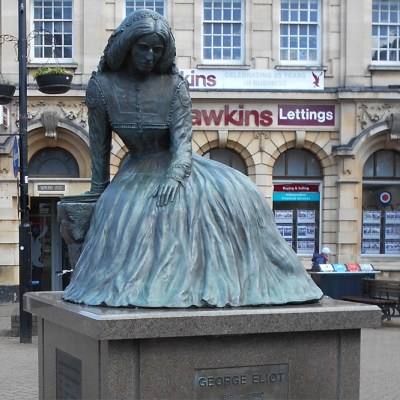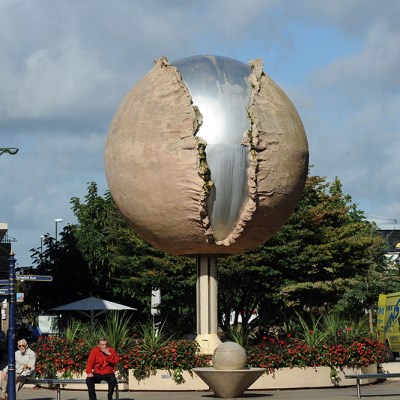It is often said that in hard times people turn to a higher power for guidance. In Britain, people tend to turn to national treasures. It is surely no coincidence that in the last decade or so, characterised by austerity, political turbulence, Brexit and the Covid pandemic, the only thing the country has been able to agree on are who its national treasures are (David Attenborough, Judi Dench, for a while Captain Tom). But the need for shared heroes has been so great as to require the lionisation of fictional characters, too. The most prominent of these is Paddington Bear, who, though a beloved figure since he first appeared in Michael Bond’s books in the late 1950s, had his national treasure status truly cemented in 2022, when, off the back of starring in two delightfully heart-warming films, voiced by Ben Whishaw, Paddington entertained an audience at Buckingham Palace with the most illustrious national treasure of them all: Queen Elizabeth II.
It is easy to see why Paddington is so popular. A migrant from Peru who ends up being found at Paddington station and taken into the care of a benevolent family, Paddington embodies one of the most enduring stories Britain likes to tell about itself: that it is an inherently welcoming country. It plays into a longstanding tradition of dubious historicising that includes such policies as the Kindertransport but conveniently ignores all those times when Britain has been rather less kind to foreigners, examples of which are too numerous to list here. The news this week of the sentencing of two vandals who earlier this month destroyed a Paddington statue in Michael Bond’s home town of Newbury in Berkshire has therefore sparked something of a national psychodrama on a par with when the statue of Captain Tom in Derbyshire was defiled in 2022. This act of vandalism, the judge said in his closing statement – apparently with a straight face – was ‘the antithesis of everything Paddington stands for’.
A temporary Paddington Bear statue unveiled in 2017 near St Paul’s Cathedral in London ahead of the release of Paddington 2. Photo: Alberto Pezzali/NurPhoto via Getty Images

The notion of a cuddly fictional bear standing for anything in particular is, of course, a ridiculous one, and raises the question of whether we, as a society, are in danger of taking fictional characters a little too seriously, of investing them with a meaning that is too great for them to bear. But it seems that this act of vandalism did not stand for anything either. The destruction of statues has a long history in political activism: think of that incredible photo of the huge head of a Stalin statue lying on the ground in Budapest, having been pulled down during the Hungarian uprising of 1956; the famous footage of Saddam Hussein’s statue being torn down in Baghdad in 2003; the statue of the slave-trader Edward Colston being thrown into Bristol harbour during the Black Lives Matter protests in 2020. The footage of the Paddington statue being ripped off its bench is, on the other hand, almost slapstick and, as far as we know, the perpetrators – two RAF engineers – were motivated not by political anger but by plain old drunken machismo.
And while your roving correspondent would never wish to advocate the vandalism of public property, it could even be argued that causing reckless damage is, contra the judge’s words, in fact entirely consistent with what Paddington stands for. The bear’s high jinks invariably involve him getting into scrapes of his own making – accidentally starting fires, breaking things, getting sent to prison. As one social media user pointed out after watching the most recent Paddington film, Paddington in Peru (2024), our ursine hero manages to keep his jars of marmalade safe on the journey by sea from Peru all the way to the UK. ‘Not so clumsy when it’s your stuff and it matters to you, are you?’, the poster wrote.
There is a happy coda to this story. The two RAF engineers have been instructed to pay £2,725 towards the statue’s repair, and workers in Newbury have been putting it back together again. Apparently Paddington will be unveiled in late April, meaning that, this Easter, we can all celebrate not one, but two icons being brought back from the dead.




